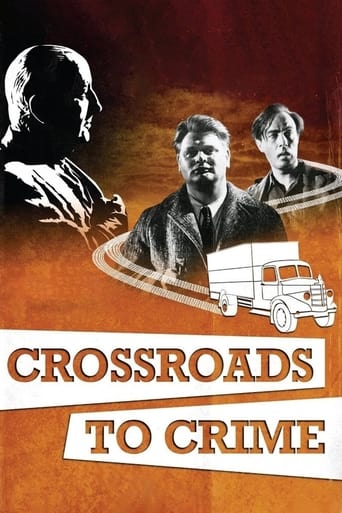malcolmgsw
When I hear that evocative theme music and the bust of Edgar Wallace I can imagine myself back in the circle of the AND Golders Green at around 430 on a Sunday afternoon.This film is one of dozens of B films made at Merton Park.The film gets off to an exciting start with a policeman hanging on for dear life to a Ford Zephyr travelling at around 40 miles per hour.After that it is all rather downbeat hill with a pedestrian plot and a rather laboured climax.Anthony Oliver plays the policeman who for some reason decides to try and get the gang on his own.Given a desperate release by Network by virtue of the director Gerry Anderson who went on to greater success with puppets.
last-picture-show
When you hear the name Gerry Anderson most people will think of classic animated fantasy serials such as Thunderbirds and Captain Scarlet but in the 1970s he also directed live action dramas including Space 1999 and The Protectors. However this neat crime drama proves that he was already doing so as early as 1960 although it appears to be his only foray into this field at the time.The film stars Anthony Oliver as Police officer Don Ross who discovers a ruthless group of hijackers are using a transport café and petrol station as a base. He ends up investigating alone, taking bribes from gang leader Diamond (George Murcell) to make them think he is on their side and eventually works with them on a robbery to steal a load of nickel. It all ends with a shoot out at the gangs HQ with gang member Johnny turning out to be another undercover policeman who helps Ross put a stop to the gang's activities.The film boasts an impressive cast with Ferdy Mayne as gang boss Miles (one of a long line of creepy screen villains), George Murcell as gang leader Diamond, David Graham (and Gerry Anderson stalwart) as Johnny and ever-reliable Harry Towb and Victor Maddern as lorry drivers. Less impressive are Miriam Karlin as chain-smoking cafe owner Connie who can't seem to recall from scene-to-scene whose side her character is supposed to be on, and Arthur Rigby as the Police Sergeant whose eye-rolling antics and mugging to camera do not pass as acting in my book.There are one or two unintentionally comical moments, most notably the early scene where Ross witnesses Diamond and his henchmen roughing up Connie before bundling her into a car. Ross quickly runs up to help her, ending up clinging on to the side of the car while it accelerates along the road. This goes on for some time and, while dramatic, is rather badly done in long shot with the uniformed figure rather obviously being a cheap dummy adhered to the car door. Also the score by Barry Gray, whilst very nicely done, falls some way short of being apt for a serious crime drama and is perhaps more suitable for a kids animation show.The opening titles reveal this to be part of the long running Merton Park Edgar Wallace Mystery Theatre series. However while produced by Anglo-Amalgamated it was not made at Merton Park but at Anderson's APF studios in Maidenhead. It was not based on a book by Edgar Wallace but from an original story. It was seemingly later added to the Edgar Wallace roster. Interestingly Barry Gray has written a nice, gentler arrangement of Michael Carr's classic Edgar Wallace opening title theme, with woodwind, strings and accordion replacing the usual guitar. Curiously the bust of Edgar Wallace looks a bit like Mr Anderson!The film was made on location in Slough and Maidenhead (and partly at the Halliford Studios in Shepperton). Connie's cafe is actually The Barton Cafe which was located opposite Anderson's APF Studios in Maidenhead.



